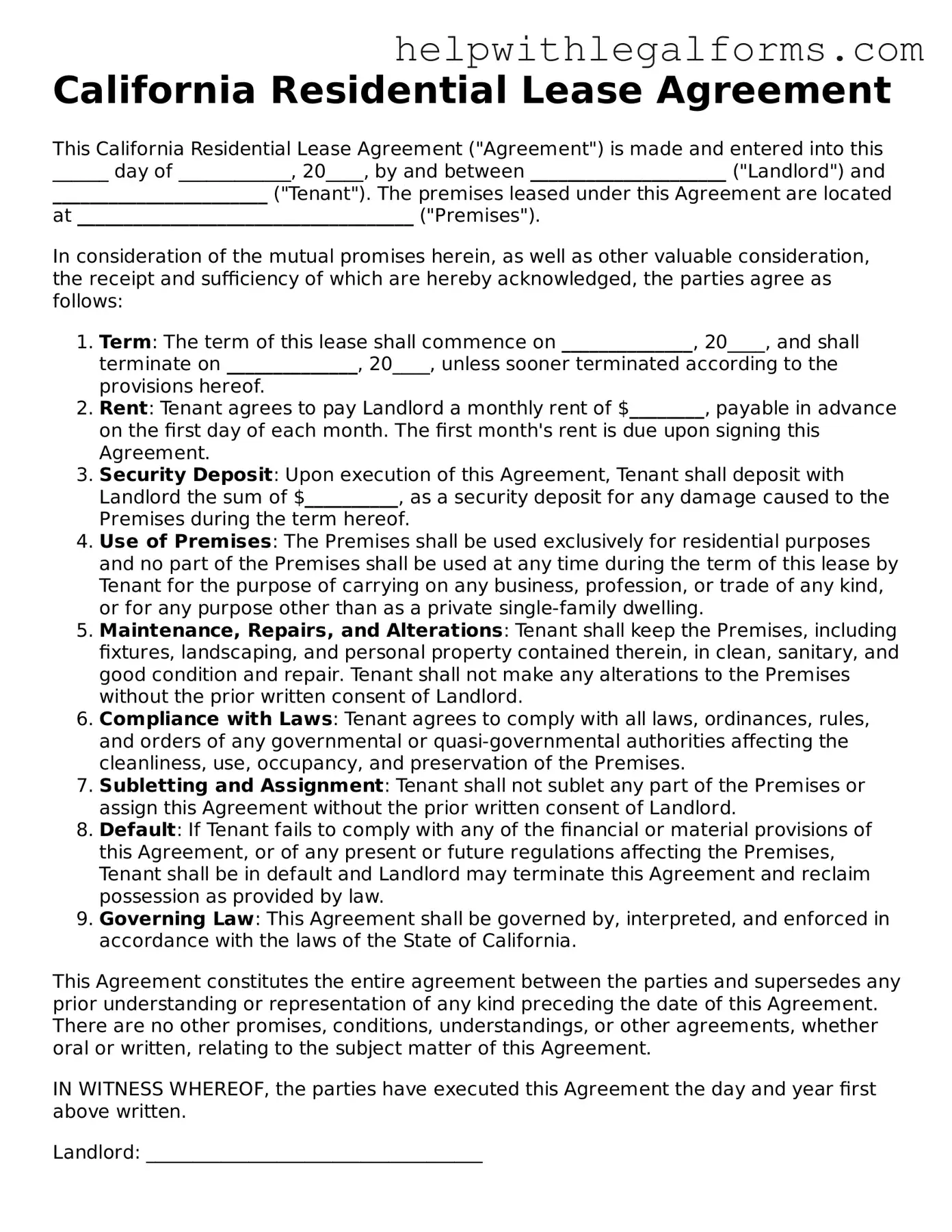What is a California Residential Lease Agreement?
A California Residential Lease Agreement is a legally binding document between a landlord and tenant that outlines the terms and conditions of renting residential property in California. It specifies the rights and responsibilities of each party regarding the property rental, including duration of the lease, rent amount, security deposits, and maintenance obligations.
Who needs to sign the California Residential Lease Agreement?
Both the landlord (or their legal representative) and all tenants over the age of 18 who will be residing in the property need to sign the lease agreement. It ensures that all parties understand and agree to the terms set forth in the document.
How long can a lease term be in California?
In California, lease terms can vary. A residential lease agreement can be set up as a month-to-month arrangement or for a fixed term, which is commonly 12 months. However, the parties can agree to a shorter or longer duration, as long as it is clearly stated in the lease agreement.
What should be included in a California Residential Lease Agreement?
The agreement should include details such as the names of all tenants, rental property address, lease duration, monthly rent amount, security deposit details, policies on pets and subletting, maintenance responsibilities, and conditions under which the deposit may be withheld at the end of the lease. It's also vital to include any other specific terms or conditions relevant to the rental arrangement.
Is a walk-through inspection required before moving in?
While not legally required in California, conducting a walk-through inspection before the tenant moves in is highly recommended. This process allows both the landlord and tenant to note the condition of the property, helping to protect both parties in case of disputes regarding the security deposit at the end of the lease term.
Can a landlord enter the property without permission after the lease is signed?
In California, landlords have the right to enter the rented property in specific situations, such as emergencies, to make necessary or agreed repairs, and to show the property to prospective renters or buyers. However, except in emergencies, landlords are typically required to give reasonable notice (usually 24 hours) before entering.
What happens if the lease is broken before the end of the term?
If a lease is broken prematurely, the tenant may be responsible for the remaining rent due under the agreement, unless the landlord can quickly find a replacement tenant. California law requires landlords to make reasonable efforts to re-rent the property to mitigate damages. The specific consequences should be detailed in the lease agreement’s section on termination and early cancellation.
Where can I find a standard California Residential Lease Agreement form?
Standard California Residential Lease Agreement forms can be found through legal services, online resources, or by consulting with a real estate attorney. Ensure any form used complies with current California laws and regulations related to residential rentals.
